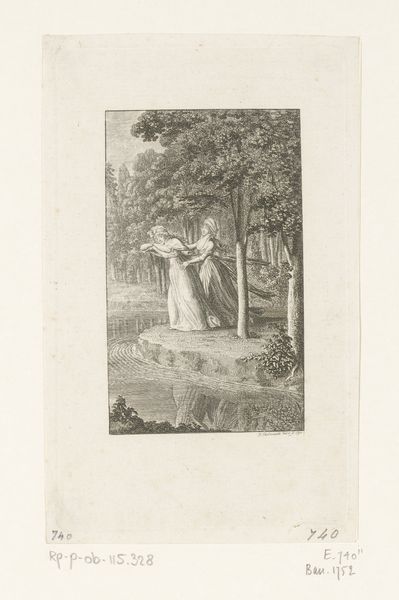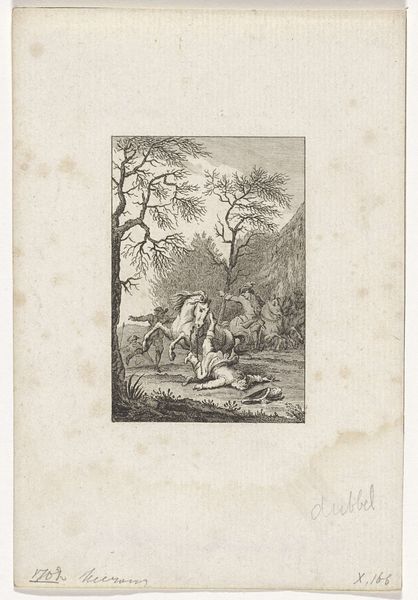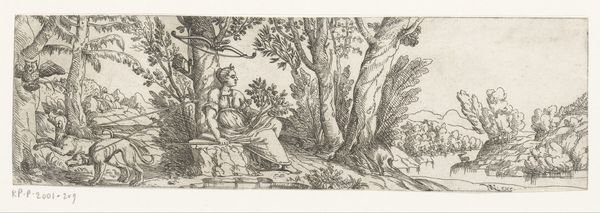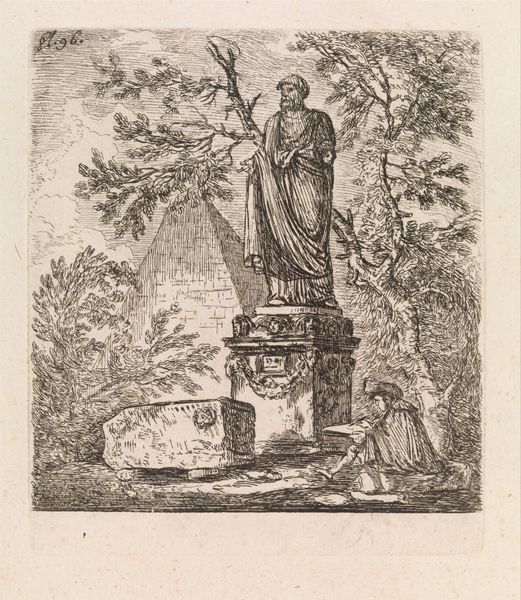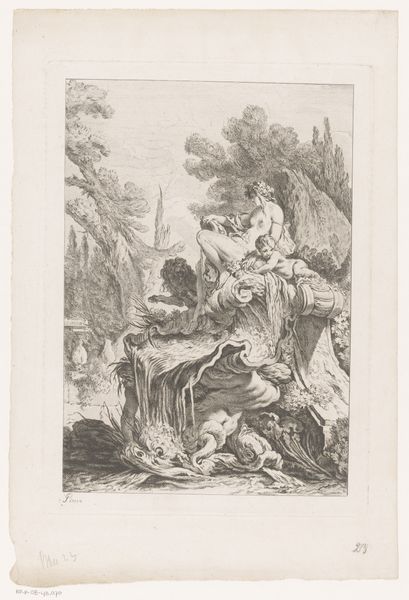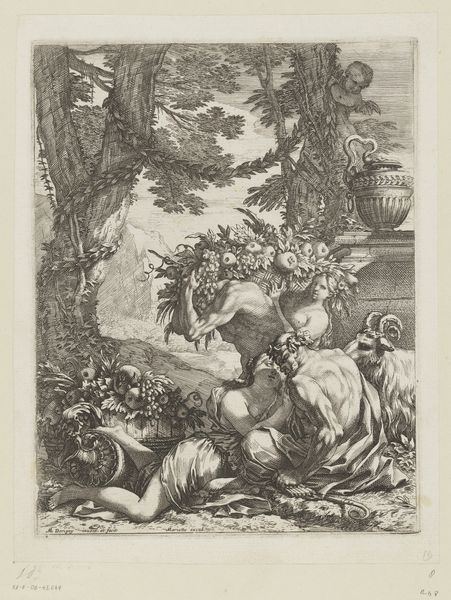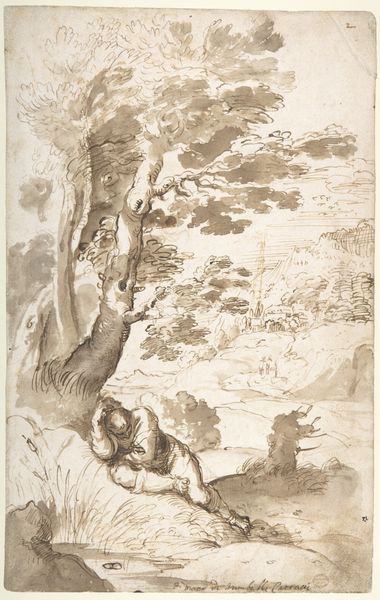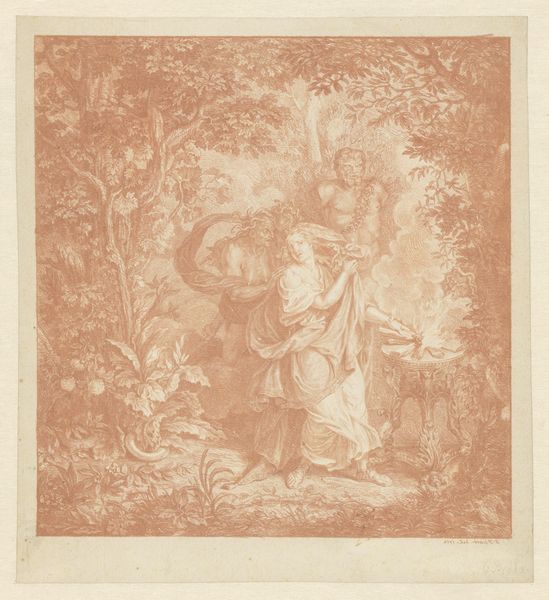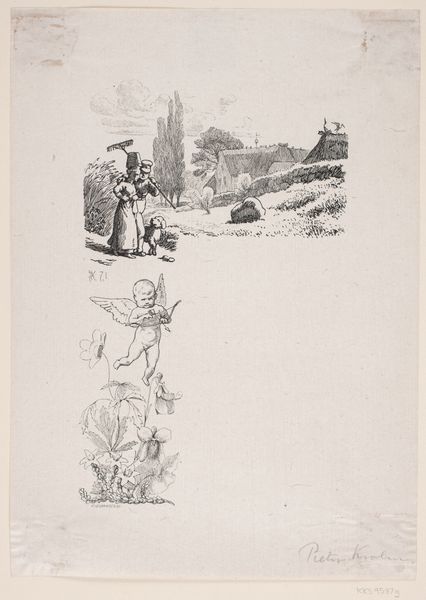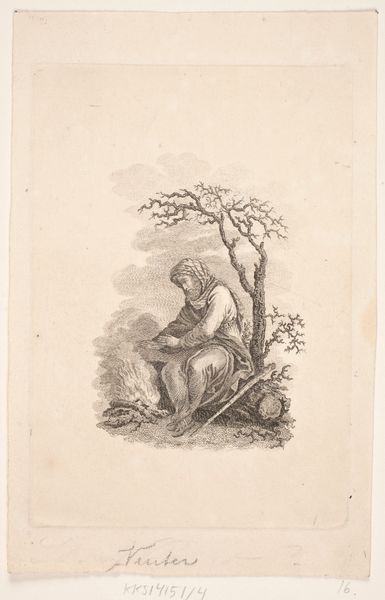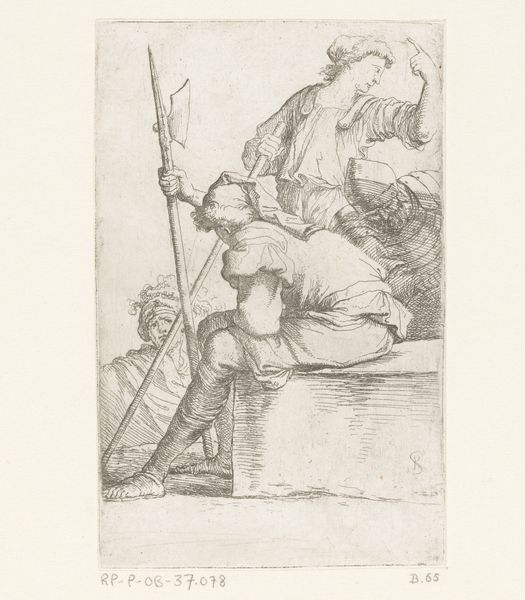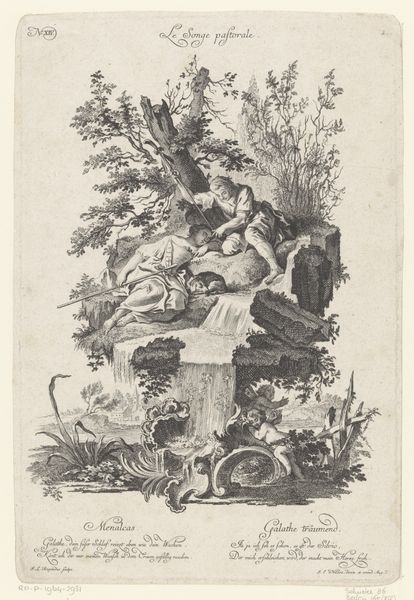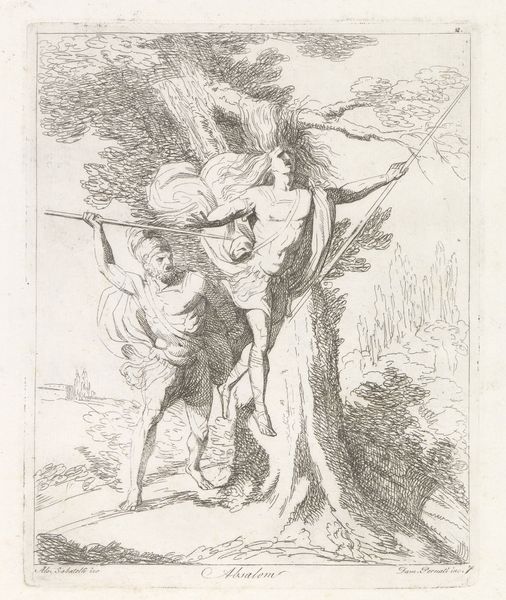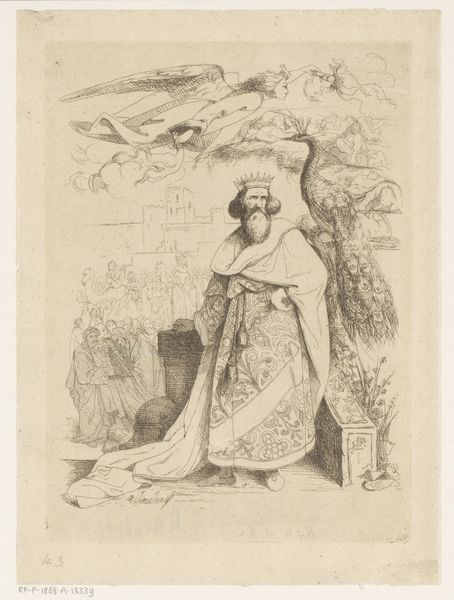
print, engraving
#
portrait
#
baroque
# print
#
landscape
#
figuration
#
line
#
engraving
Dimensions: height 230 mm, width 175 mm
Copyright: Rijks Museum: Open Domain
Curator: Here we have Francois Boucher's "Zittende vrouw met boek in een landschap," created sometime between 1713 and 1770. It resides here at the Rijksmuseum. Editor: My first impression is one of languid boredom! Look at her posture, draped across the architectural ruin, gazing skyward instead of at the book she holds. Curator: It's a fine example of Baroque portraiture combined with the landscape style, typical of Boucher's aristocratic clientele seeking pastoral idealism. It is also worth noting this is an engraving; we are not viewing a painting. The lines are incredible and so neat. Editor: Right, and think about the engraving process itself. Each line, each shadow meticulously etched—it's a labor-intensive process, a stark contrast to the perceived leisure of the subject. Where would the paper originate, the tools, the means of dissemination? All crucial to unpacking this piece. It brings the means of making art front and center! Curator: Absolutely. And it speaks to the function of art at that time. Boucher was enormously successful and catered to the sensibilities of the court. This work, while appearing relaxed, is actually meticulously composed to project an image of cultured ease for a specific social class. It’s not an accident she is accompanied by ruins; antiquity signals wealth, knowledge, and legacy! Editor: So the ruin almost serves as a material prop for reinforcing status? It speaks of a learned, elite appreciation, much like owning this print would have signalled something important about one's position. Curator: Exactly. What seems at first glance a light-hearted image has multiple layers reflecting 18th century societal values and aspirations. Editor: Looking at it through the lens of materials and labor reveals this hidden dimension, the work beneath the leisure. Curator: Precisely. Considering the historical and social forces informs the image but equally reminds us about production and making.
Comments
No comments
Be the first to comment and join the conversation on the ultimate creative platform.
